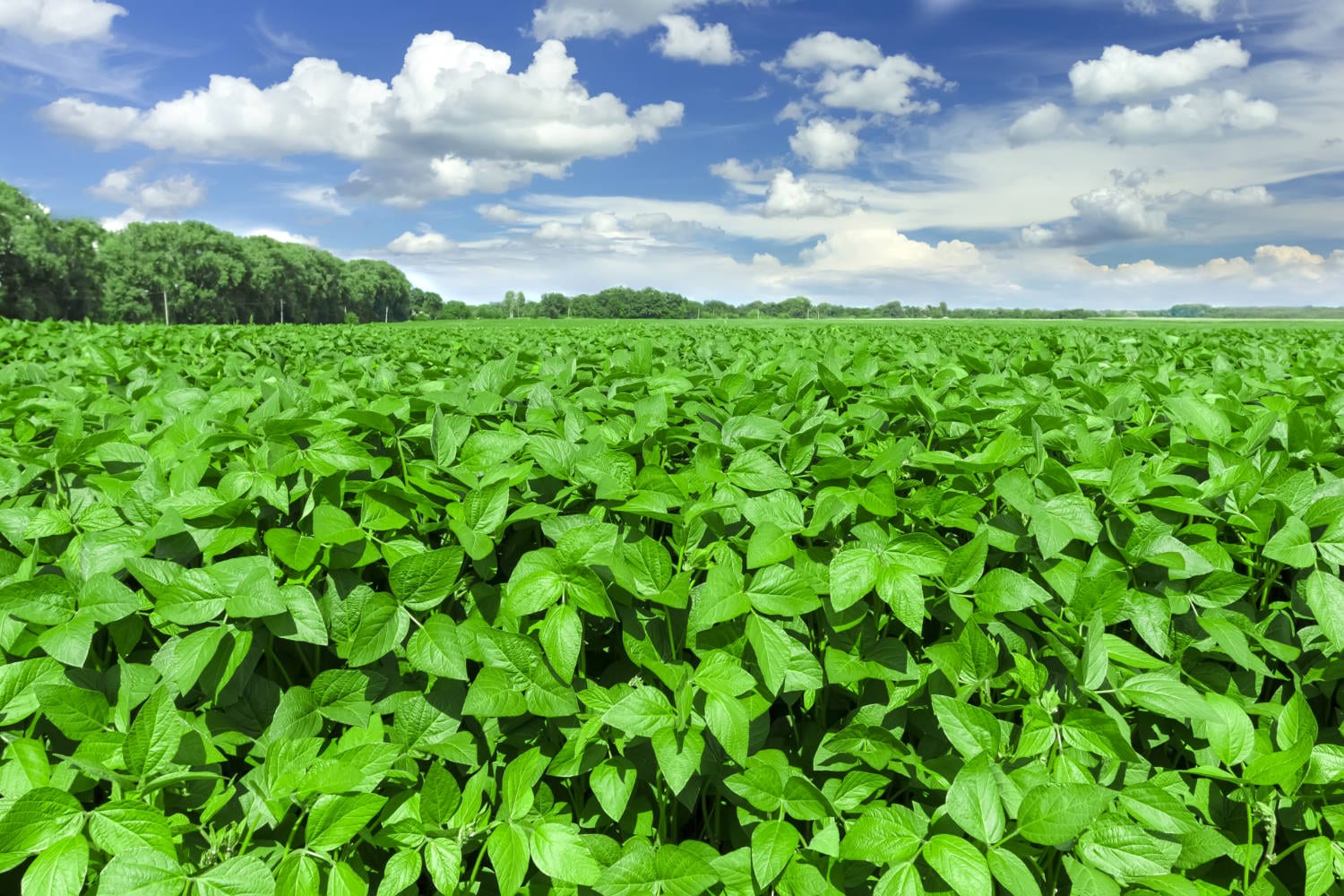 Soybean planting has lasted through the end of June in our area of Arkansas, in the south-central U.S. The ongoing pattern of getting 2.5 to 5 cm, or 1 to 2 inches, of rain about every week through the spring caused the planting season to be spread out. Although the rain slowed planting, it ensured good soil moisture. Thankfully, it didn’t come in larger amounts at a time, so we didn’t have to replant much at all.
Soybean planting has lasted through the end of June in our area of Arkansas, in the south-central U.S. The ongoing pattern of getting 2.5 to 5 cm, or 1 to 2 inches, of rain about every week through the spring caused the planting season to be spread out. Although the rain slowed planting, it ensured good soil moisture. Thankfully, it didn’t come in larger amounts at a time, so we didn’t have to replant much at all.
 With that rain pattern, the technology in our tractors helps us to make progress quickly when the field conditions allow. My son Cody does much of the planting, and with autosteer, monitors showing the field map in the tractor cab, and sensors on the soybean drill to ensure it is working correctly, he can plant well into the night. He was able to plant as many as 100 hectares, or nearly 250 acres, in a really good day.
With that rain pattern, the technology in our tractors helps us to make progress quickly when the field conditions allow. My son Cody does much of the planting, and with autosteer, monitors showing the field map in the tractor cab, and sensors on the soybean drill to ensure it is working correctly, he can plant well into the night. He was able to plant as many as 100 hectares, or nearly 250 acres, in a really good day.

We were able to plant our research plots in 7 straight days, which will be great for comparing variety progress and results throughout the season. We have a wide variety of soybeans in our research plot, including several varieties of non-GMO and food-grade soybeans. We typically start our cross-breeding work in mid-July.
All of our soybeans have emerged well, and we are applying herbicides to control weeds as needed until the soybeans reach canopy, where the plants are big enough that their leaves shade between the rows. We haven’t had to start irrigating our soybeans yet, though that often happens about the beginning of July. In July, our temperatures usually rise and rains come less frequently. We will be scouting regularly for insects and diseases to determine if we need to apply anything to manage problems and protect crop quality, especially as pods start to form.

The soybeans are doing well, and we expect the early planted soybeans to start flowering in the next week or so. Soybeans have the ability to make up differences in planting dates quickly, so even the most recently planted soybeans won’t be very far behind by the end of July.
Our rice is also growing well. During the last full week of June, we applied nitrogen to the rice in the form of urea, a dry formulation. A crop duster, or small airplane, flies it onto rice fields. As soon as that nitrogen is applied, we flood the rice fields. We maintain 10 to 15 cm, or 4 to 6 inches, of water on our rice paddies for about two months. Flooding supports crop growth and helps with weed control.

Irrigation is important in our fields, for both our rice and soybeans. All of our fields have underground pipes roughly 35 cm, or 14 inches, in diameter. These pipes are at about the water table level. From a combination of ground water from these pipes and our 40.5-hectare, or 100-acre, reservoir, we pump water into these fields. In rice, we allow water to spill between paddies to control how the field fills. It typically takes a couple days to flood each field, and then we check water levels daily and add more water as needed. With our high temperatures, we get evaporation and often have to turn on pumps to a field about once a week. In soybeans, we just flood a field for a few hours and then let the water move to the next field. We don’t hold standing irrigation water on the soybeans for very long to protect crop health.

Our irrigation system is set up to be as efficient as possible. It is much more efficient to pump closer to the surface that it is from wells that can be an average of 55 meters, or 180 feet, deep. Our reservoir is a great conservation tool that allows us to use the water we’ve received throughout the spring for rice flooding and irrigating soybeans. Local water rights also allow farmers to use portable pumps to pull water from public irrigation ditches that flow past their farms. This means water can be used by multiple farmers as it flows toward the Mississippi River.
We are very happy with how our crops are progressing so far this season.

